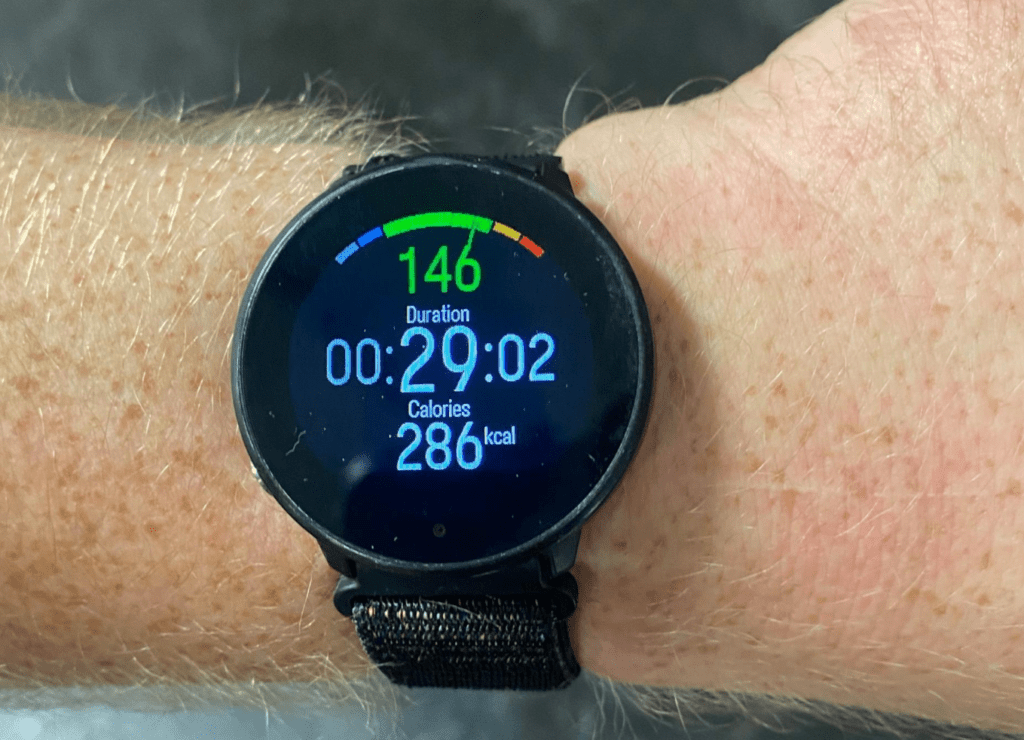
Over the last decade, the number of smartwatches on the market has exploded, and although many of them share similar features, there are clear leaders in the space.
In this article, we’re going to look at some of the best rowing watches on the market. We’re not looking at purely generic smartwatches because some watches track rowing-specific data.
That being said, we’re aware that not all of our readers will be interested in pure rowing data and instead will be interested in the fitness metrics too. We’ll also, therefore, feature generic smartwatches.
The options here will be suitable for on-the-water (OTW) and machine-based rowing.
You’ll notice in this review there are no ‘cheap’ (less than $200) watches. There’s a good reason for this - quality. I’ve been wearing heart rate monitor watches for 20 years, and I’ve learned that when it comes to performance if you buy cheap, you’ll regret it.
If money is no object and you want an all-singing, all-dancing rowing watch, this is your best bet. It’s the latest Fenix update from Garmin and is their premium product. It’ll cost you a lot of money, but this thing is like a computer strapped to your arm. The sheer amount of metrics and data you’ll collect is, frankly, nuts.
It’s a great-looking watch; it is truly multi-sport and is great for OTW rowing and erg rowing. It’ll track strokes in both types, but when rowing outdoors, it’ll track speed, distance, and time via GPS. There’s not enough space in this review to detail its features, but if you want a rowing watch that covers every other fitness base, this is the one for you.
Garmin are tech-heavy. You can take phone calls, listen to music, receive push notifications, etc on them too, but given that doesn’t make them better watches for rowers, I’m going to largely ignore those features because I think they’re irrelevant.
The Quatix 7 is a watch designed specifically with water sports in mind. It’s a watch that boasts features you don’t see anywhere else in the smartwatch market, such as water depth, SailAssist, wind speed, tide information, etc. It’s largely designed with sailors in mind, but the rowing and fitness data is not to be sniffed at.
If you are more of an OTW rower, it’s the perfect watch for you. Even if you’re not, the fitness features are also excellent. The Quatix will still track all of the normal fitness data but stroke rates as well for rowers. Garmin build quality means you can trust it to be a solid watch. Again it’s not cheap, but you want something rugged and able to record accurately.
Polar were the original developers of wearable heart rate monitor technology and have continued to develop products ever since. A bit like Concept 2, they tend to focus on what’s important in a product rather than going for a dazzling array of features. The Polar Vantage M2 is a classic example. It’s a great-looking, well-built and practical smartwatch that is excellent for rowing in different formats.
The Polar Vantage M2 is a true multisport watch. It has 130 different sport profiles available to it, with rowing being one. It uses GPS to monitor speed, route and distance when OTW. It won’t count stroke rate on the erg, but then there are rowing apps that do that. It will count other important metrics such as heart rate, calorie burn, workout intensity etc. It’s a great option and a fraction of the price of a Garmin watch.
The Ignite 2 is another great all-around fitness smartwatch from Polar. It’s a cheaper watch than the Vantage M2, but it features much of the same technology and specifications. The main differences are the lack of ‘Training Load Pro’ technology in the Ignite 2, which monitors the physical output and makes suggestions on your workload based on previous training, and the slightly reduced battery capacity. The Ignite 2 benefits from the excellent Polar Flow app support.
If neither of those are important to you, the Polar Ignite 2 is a solid multisport fitness watch. Yes, the watch will need charging more than one or two of the others (once per week based on 5 workouts per week), but still less frequently than an Apple or Samsung watch. It will accurately track rowing distance, heart rate, calorie burn, etc. There’s built-in GPS, music playing, and weather forecasting. You won’t be able to count stroke rate on an erg, but setting the watch to the ‘rowing’ profile and using the GPS, you’ll get speed, distance, and rowing route data on your app with OTW sessions.
The Garmin Venu 2 is a (for Garmin) mid-range priced smartwatch. Compared to the Polar, it’s still steep (you won’t get much change out of $450), but it’s a solid product that will suit a lot of users. It benefits from many of the features of watches twice its price and also comes with its own set of earbuds, making listening to music through the watch easier.
As a rowing watch, the Venu 2 is at home on the water and with an erg. The GPS tracker will monitor the usual speed, distance, and route metrics outside, whereas the rowing profile on the watch will monitor stroke rate. Fitness data is monitored on both. The Venu 2 has all of the fitness features of the other Garmin watches but at a much more tolerable price point.
This is a given - you can’t have a watch that isn’t water resistant if you’re going to use it on the water! Personally, I always go for watches with 30m or more of water resistance. I’d steer clear of anything with only 5-10m water resistance.
Again, a given. If you want to measure distance, speed, and routes, GPS is vital. All the smartwatches in this review have good quality GPS services backed up with app support. You can store routes and track your workout data on the same routes over time.
If you’re primarily an OTW rower, having weather data directly to your watch is a great feature. Weather can change quickly and dramatically in some parts of the world, so it’s helpful and safe to be a step ahead should the weather change.
In the case of a watch, having access to your VO2 max data is an element of progression. The power in knowing your VO2 max comes in seeing how it changes over time - a single data snapshot isn’t much use to you. All of the watches reviewed here can store this information.
The general consensus in the research is that a heart rate monitor chest strap is the best and most accurate way to monitor heart rate. This will have to be paired with the watch, though. All of these watches can pair with a separate chest strap. Whilst the watches are generally considered accurate, if you want a precise figure, pair them with a chest strap.
Here are our heart rate monitor chest strap recommendations.
We’ve reviewed products from the two companies that make the best watches for rowers here, so this is relatively simple.
Garmin uses the ‘Connect’ app, and it’s superb. It tracks all of your data (physiological such as heart rate, steps, energy expenditure, sleep data, and a huge range of others) and stores it for easy access.
In addition, the app has a community element that allows you to compare data with users from all over the world.
Polar uses the ‘Flow’ app, which is also fantastic. Again like Garmin, it tracks your physiological data and expenditure, storing it for review later on. It’s a very user-friendly interface, and although it isn’t as ‘big’ as the connect app, its streamlined nature works in its favor.
The community aspect of the Flow app isn’t as good as connect, but you can link your polar products to apps such as Strava if you need that.
In terms of connectivity to other devices, it’s done by ANT+ technology. In the case of Polar, you can only connect to rowing machines by using a chest strap.
Although the Garmin watches here do connect to rowing machines, they can be unreliably connected via the watch, and manufacturers such as Concept 2 suggest you use a chest strap to ensure accurate and strong connectivity.
It’s important that your watch is comfortable as you row - the last thing you want is for your watch to be bothering you mid-stroke. To ensure comfort, here are a few tips…
With watches, there’s no outright ‘winner’ - it depends on a lot of factors such as budget, additional training you do, whether you row indoors or on the water, what your design taste is and how important features such as music, etc. are to you.
What I can say is that I’m 100% comfortable recommending any of these watches to you - they’re all excellent.
Garmin is incredibly feature-heavy, but they’re not cheap. Polar is more single-focused as a fitness watch, but they’re a huge amount cheaper. It’s your job to decide what you want, what you need, and what you can afford.
They’re all excellent watches for rowers, and you won’t go wrong with any of them.

